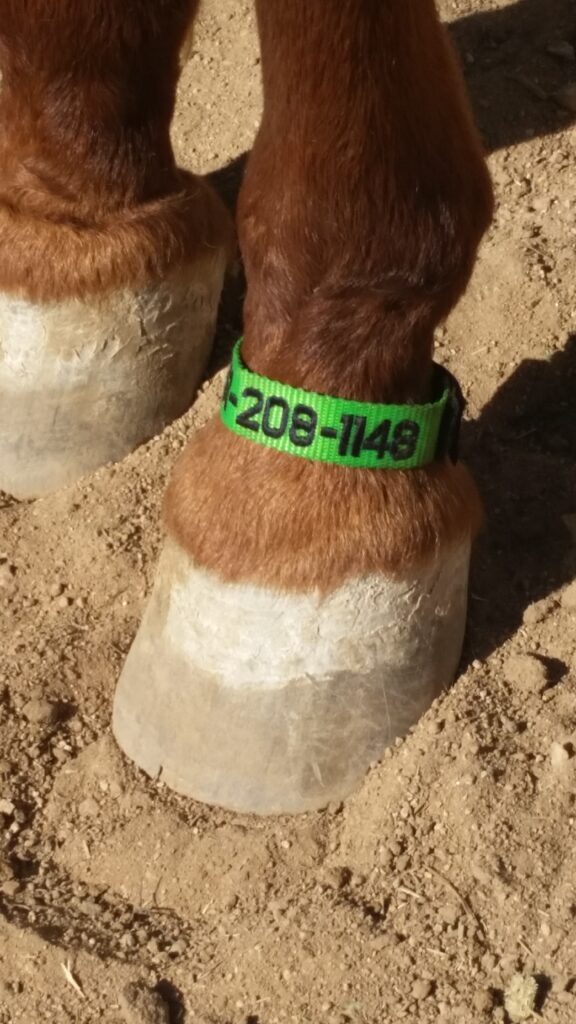I reached out to EquestriSafe recently about a profile on Equus Education. Teresa was kind enough to answer some questions about what she does.
How much of your day/week is related to horses?
I am constantly aware of horses, horses being stolen, the wild horse round-ups, kill buyers and auctions as well as clinics, clinicians and equines in general. Unfortunately at the present time I do not have any horses of my own. But I make every effort to be involved with events and other opportunities that put myself and our products in front of horse enthusiasts and owners.
What is it exactly that you do?
We produce Equine Identification items along with offering other safety products by women owned businesses. Our EquestriSafe products are handmade or enhanced by us, personalized and often customized for our customers.
With equines being top of mind, we have expanded and increased our identification products so that they can be used for almost all small farm animals and dogs. Several items can be used for pet cattle, goats, sheep, camels, llamas, alpacas, possibly also for emus and Ostriches.
In this field of work, is it possible to be a full-time professional and earning a liveable income?
As an individual manufacturer entrepreneur it is up to me to make a liveable income. My income from EquestriSafe has been a hard, long fought battle of learning, advancing and getting the word out about our products.

Since we are not the only Equine Identification product company on the market, for me it is all about explaining our products, uses, and safety. We also do not mass produce our products offshore. Being focused only on safety and identification, our income is reliant on natural and man made disasters, such as wildfires, hurricanes, floods, traveling accidents and other incidents that would warrant having visible reliable identification on your equines.
My husband joined in with me in 2016 and EquestriSafe became mobile. We have traveled the US since then to horse expos, small farm and ranch events as well as being able to provide products to retailers and other outlets. Yes, EquestriSafe has afforded us the ability to do this.
Profile On: Teresa Spencer, EquestriSafe
What are the general steps taken to be employed in such a role?
Anyone can be an Entrepreneur, however it is not to be taken lightly and is not without second guessing yourself always. If you have a message, product, device or way of doing things just that much different and have gained an audience, then yes anyone can do what they want to do in the equine industry.
That is what is so wonderful about our industry, things are always changing, messages are often the same, but spoken in a different way that suddenly you might be the one to listen to. I personally look for instance to all the “Natural Horsemanship clinicians” there are many that have come and gone and there are many who are doing the same things, but in a different manner and with a different delivery.
Look at what you do, start at the bottom, define your message, help others, get lots of testimonials, referrals and be present.
Favourite horse memory?
I have several. When I was a teenager, my friends and I would spend all day every day in the summer, trail riding on a private cattle ranch, climbing hills and valleys with our horses from early morning until dusk.
As an adult my favorite memories are the friends I found who were and are very passionate about horses. As I was part of many different groups of women, I could and would often be able to ride 7 days a week, attend clinics or work privately with a trainer on things I had not learned as a young woman..
Future goals?
Continue with our current products and grow the company with other safety and identification products.
Best thing about your sport/profession?
The best part about my profession is that I continue to meet many of our customers. Many of our customers are adamant advocates of our products and mission to provide safe, reliable, visible identification for all equines. Word of mouth, customer referrals and returning customers are our biggest joys in our business.



